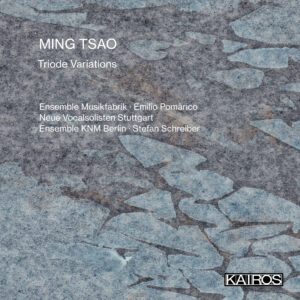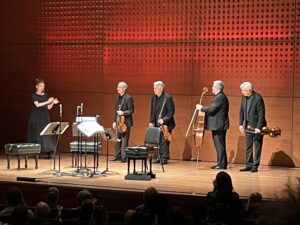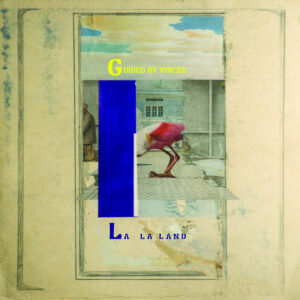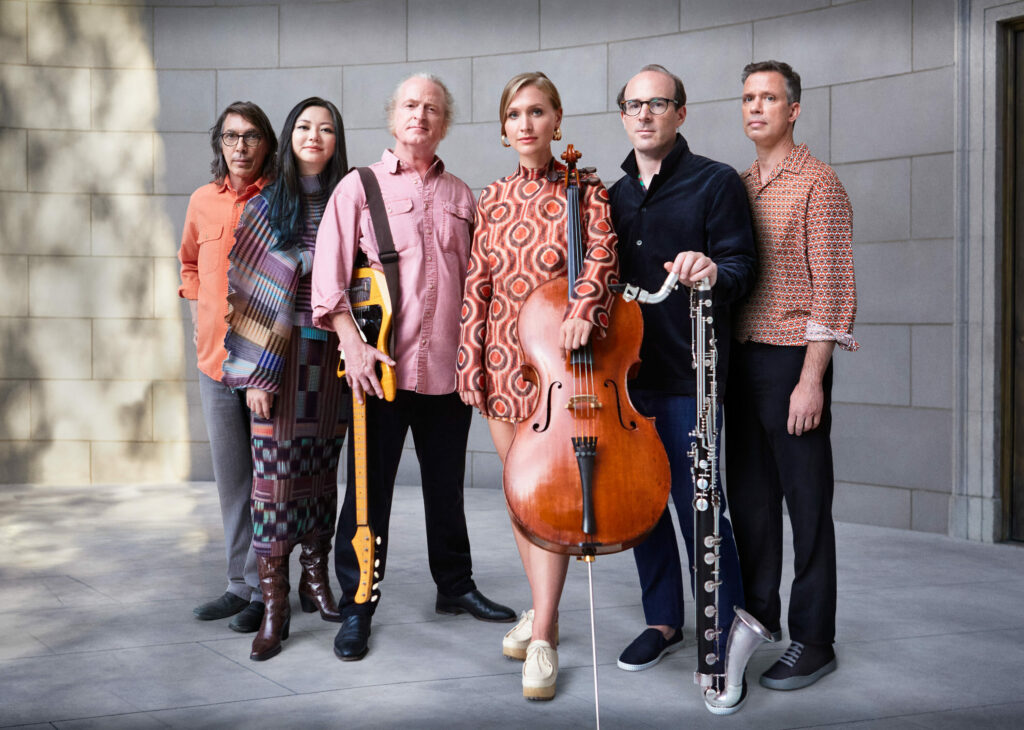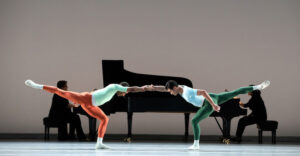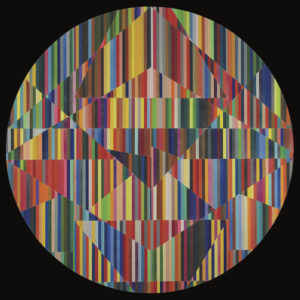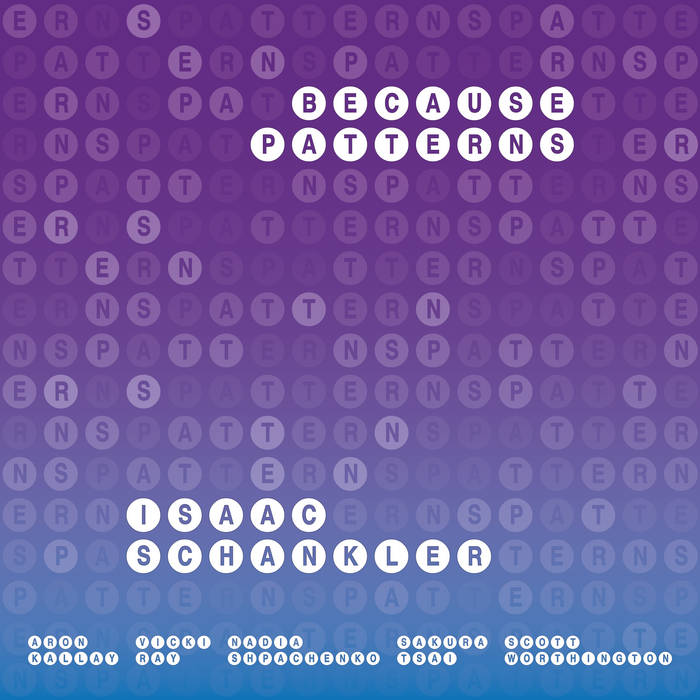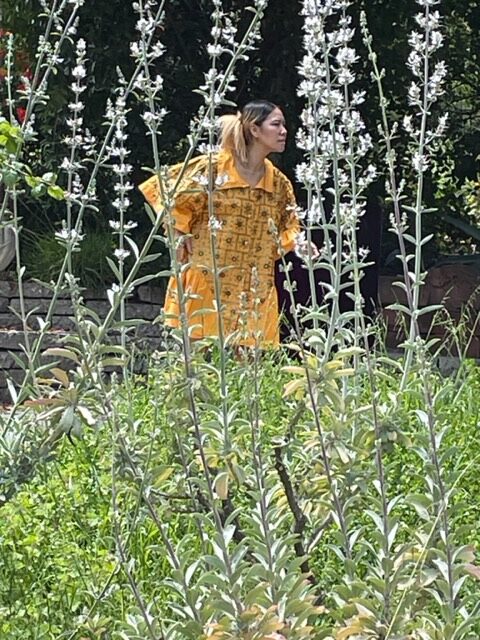
Arlington Garden in Pasadena was the venue on Sunday, May 7, 2023 for Urban Birds ‘23, an afternoon of sunshine, synthesized sound experiences and live outdoor performances presented by Synchromy. A number of Los Angeles-based composers and performers were on hand and the audience was encouraged to simply wander through the garden to take in the sound installations and stop by the scheduled performances. The weather was perfect and the event program also listed “bird demonstrations by Wild Wings, crafting stations by local artist groups, and hands-on activities for all ages.”
Entering through the main gate to Arlington Garden and following the gravel footpath soon brings you to a clearing with chairs, benches, umbrellas and tables. This was the venue for Hornbill, a continuous sound installation featuring sustained ambient tones and a few high-pitched electronic beeps and boops. This was soft and calming, and conjured a convincing electronic metaphor for wild birds chirping in a garden. Further down the footpath was Feast + Famine, a demonstration of some live worms (zophobas atratus) capable of eating and digesting plastic. If you were brave enough to have a look inside, a few very small creatures could be seen crawling over some styrofoam flakes, apparently enjoying a hearty meal. A speaker emitted a sort of low gnawing and crunching sound that was actually the amplified chewing of the worms.
Nearby was an elegant performance by Sharon Chohi Kim who acted out the part of a bird in the wild. Her movements were slow and deliberate with eyes darting about as if on the hunt or wary of predators. Ms. Kim’s dress was long and loosely hung, suggesting folded wings at her side. Although brightly colored, she blended nicely into the garden underbrush as she stalked about. Kim issued bird-like calls that added to the convincing illusion. All of this was improvised in the moment and very effective. Ms. Kim deployed a graceful control of her movements and was truly channeling her inner bird. 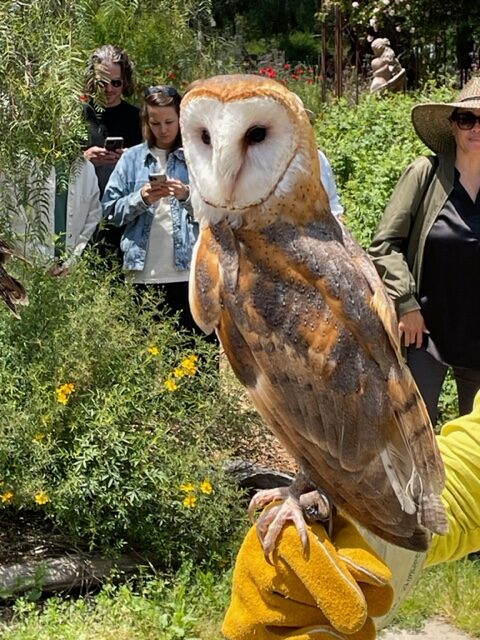
Further on there was a demonstration of live owls by Wild Wings. It was hard to believe these birds were not mechanical, especially when they turned their heads almost full circle. The barn owl, in particular, seemed particularly dignified. Nearby was another sound installation, Twa Corbies, and this consisted of speakers mounted inside two wooden keepsake boxes that frequently emitted loud bird calls and squawks.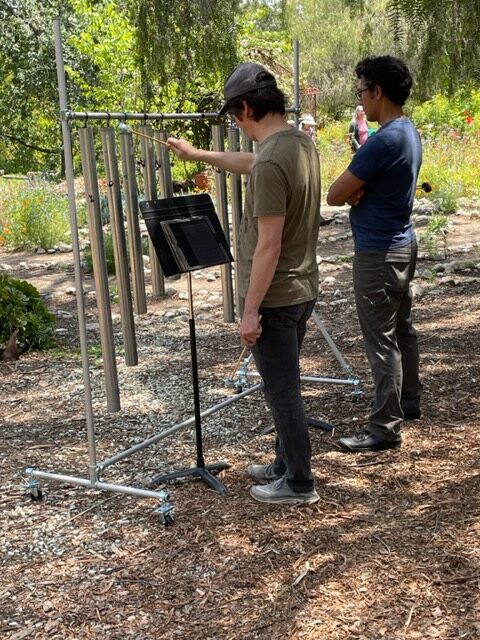
In a clearing at one end of the garden was Stellate Hexany Earth Chimes and this consisted of two tubular chime stands standing about 40 feet apart with two players at each. The chimes were fashioned from steel tubes and trimmed individually to pitches conforming to a Just Intonation tuning scheme. There was a written score for each of the four parts and the playing was synchronized by timer. Four for Twenty, composed by Daniel Corral, was the piece performed on these chimes. This began with solitary tones ringing out, each in turn, releasing sounds that seemed to hang effortlessly in the air. The tuning of the chimes and the careful striking with mallets produced a series of gentle and calming sounds. As the piece progressed, a call and answer pattern developed between the two chime sets that was very effective. The rate of striking the chimes increased gradually towards the finish and the garden air was filled with what might have been the ringing of distant church bells. After the piece concluded, Daniel Corral was available to discuss his techniques of chime construction and tuning as well as the interpretation of the notated score.
In another part of the garden, the fully electronic Nightjar:, by Kelly Heaton, was performed by Christina Lord. A beautifully crafted circuit board in the shape of a bird was the centerpiece of Nightjar:. This was populated with a number of electronic oscillators that randomly emitted bird calls from various species. These sounds were sampled and mixed in a PC using synthesizer software so that the performer could improvise the texture around the chirps, squeaks and squawks coming from the bird. The result was a surprising and convincing electronic sound picture that nicely captured the organic feeling of live birds calling in the wild. This was no doubt partly due to the power of suggestion – the electronic circuit board/bird sculpture was so appealing to the eye that its sounds were uncritically perceived by the brain as coming from a living bird. Even so, Nightjar: is an impressive combination of electronic craft in the service of musical art.
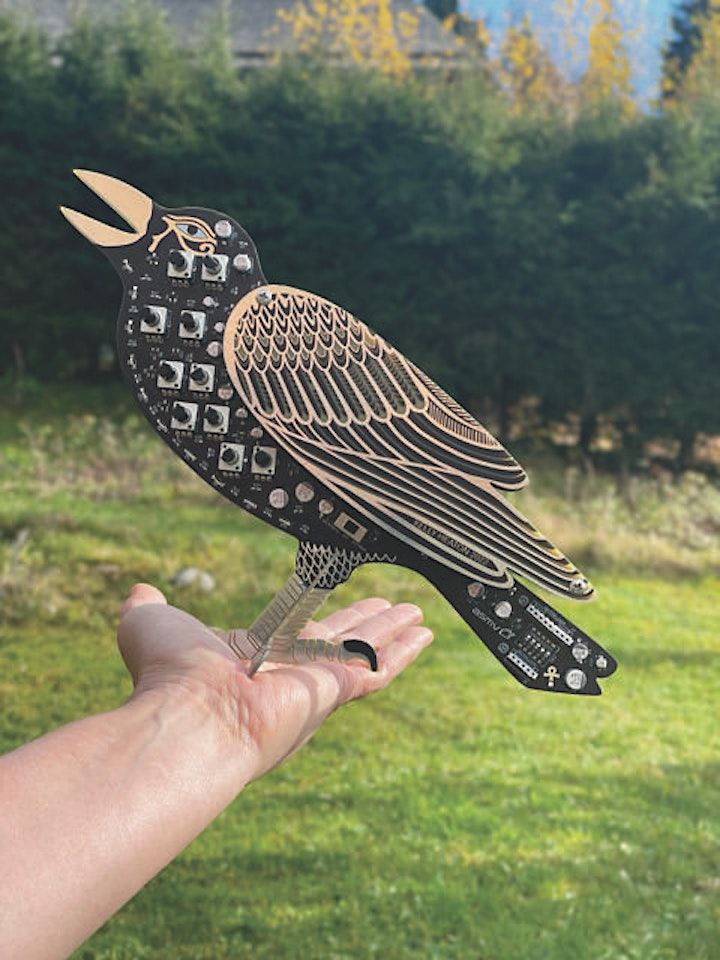
Urban Birds ’23 is a pleasant outdoor musical experience that will be all the more appreciated after the long and wet Southern California winter. Urban Birds ’23 moves to the Audubon Center at Debs Park, Los Angeles, for a repeat showing on Saturday, May 13
Audubon Center at Debs Park
4700 Griffin Avenue
Los Angeles, CA 90031
Synchromy is:
Ashton Phillips, Carolyn Chen, Daniel Corral, Kelly Heaton, Cassia Streb, Tim Feeney, and Thadeus Frazier-Reed.
